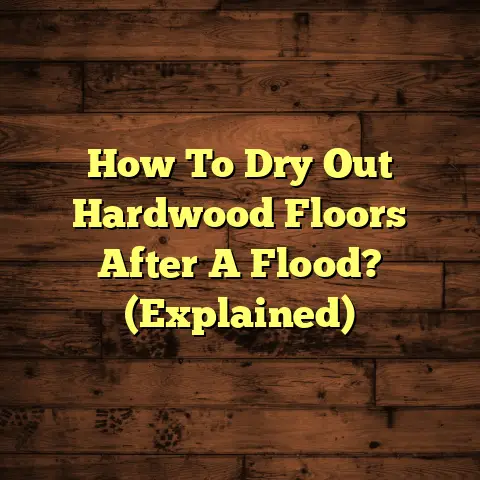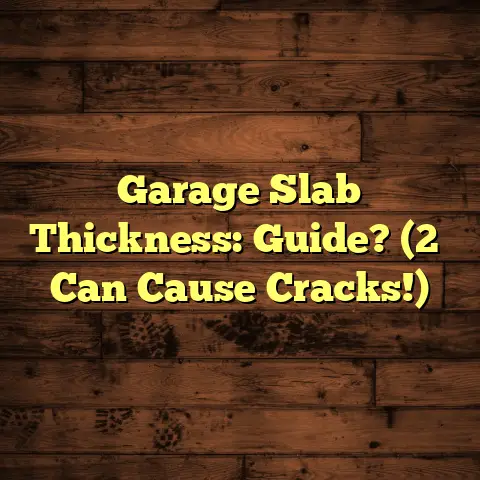Bamboo Floor Durability? (3-Year Test!)
A Comprehensive 3-Year Durability Test
I’m Mark, a flooring contractor with over 15 years under my belt. And let me tell you, I’ve seen it all – from warped hardwoods to peeling laminates. But today, I want to talk about something that’s been gaining serious traction in the flooring world: bamboo.One of the biggest reasons folks are drawn to bamboo is its ease of maintenance. Think about it: smooth surface, naturally resistant to dirt and stains. A quick sweep and the occasional mop? That’s usually all it takes to keep it looking spic and span.
For busy families or anyone who just doesn’t want to spend their weekends scrubbing floors, bamboo can be a real lifesaver. But does that easy maintenance come at the expense of durability? That’s the million-dollar question, isn’t it?
Well, I decided to put bamboo to the ultimate test. I’m talking a full three years of real-world wear and tear. No holds barred.
Buckle up, because we’re diving deep into the world of bamboo flooring to see if it truly lives up to the hype.
Section 1: Understanding Bamboo Flooring
So, what exactly is bamboo flooring? It’s not wood, that’s for sure. Bamboo is actually a grass, believe it or not. But it’s an incredibly strong and fast-growing grass, making it a sustainable and renewable resource.
The production process is where things get interesting. Unlike traditional hardwood, bamboo stalks are harvested, shredded, and then re-formed using heat and adhesives. Think of it like making a giant, solid piece of plywood, but with bamboo fibers.
Now, here’s where it gets even more interesting: There are different types of bamboo flooring, and each one has a different level of durability. Let’s break them down:
-
Strand-Woven Bamboo: This is the toughest of the bunch. The bamboo strands are compressed under extreme pressure, making it incredibly dense and resistant to scratches and dents.
-
Horizontal Bamboo: This type features the bamboo strips laid flat, showcasing the natural “knuckle” patterns of the plant. It’s softer than strand-woven.
-
Vertical Bamboo: The bamboo strips are oriented vertically, creating a linear look. It’s also softer than strand-woven.
The type of bamboo you choose will significantly impact how well it holds up over time. That’s why understanding the differences is so important.
Now, why bother with a durability test at all? Well, flooring is a big investment. You want to make sure you’re getting something that will last. A durability test gives you a glimpse into how a flooring option will perform under real-world conditions, helping you make an informed decision.
Section 2: The 3-Year Durability Test Setup
Alright, let’s get down to the nitty-gritty of my 3-year bamboo flooring experiment.
First things first: the environment. I conducted the test in a high-traffic area of my own home – the entryway and hallway. This area sees a lot of action, from muddy boots to kids running through with sports equipment. It’s basically a torture chamber for flooring.
The climate here is fairly moderate, with warm summers and cool, wet winters. So, the flooring was exposed to fluctuations in temperature and humidity.
The bamboo flooring I used for the test was a strand-woven variety from a reputable brand (I’m not going to name names here, but let’s just say they’re known for their quality). It was 1/2 inch thick and had a multi-layer protective coating. It also held certifications for low VOC emissions, which is important for indoor air quality.
Now, how did I actually measure durability? I focused on these key criteria:
- Scratch Resistance: How well did the flooring hold up against scratches from shoes, pets, and furniture?
- Dent Resistance: Did heavy objects or dropped items leave dents or impressions?
- Water Damage: How did the flooring react to spills and moisture? Did it warp, stain, or develop mold?
- Fading: Did the color of the flooring fade over time due to sunlight exposure?
- Overall Wear and Tear: How did the flooring look overall after three years of use? Did it still look new, or was it showing its age?
I meticulously documented everything, taking photos and notes every few months to track any changes or issues. It was a lot of work, but I wanted to get a clear picture of how this bamboo flooring performed over the long haul.
Section 3: Year-by-Year Performance Analysis
Okay, let’s dive into the year-by-year breakdown. This is where things get really interesting.
Year 1: Initial Impressions
After the first year, I have to say, I was pretty impressed. The bamboo flooring still looked fantastic. The initial shine was still there, and there were no major scratches or dents.
The maintenance was a breeze. A quick sweep every few days and a damp mop once a week kept it looking clean and fresh. No special cleaners or treatments required.
My family also gave it a thumbs up. They loved the look and feel of the flooring, and they appreciated how easy it was to clean up spills and messes.
Here’s a quote from my wife: “I love how easy it is to keep clean. With the kids and the dog, I need something that can handle a lot of wear and tear, and this bamboo flooring has been great so far.”
Year 2: Mid-Test Observations
By year two, I started to notice a few subtle changes. There were a couple of minor scratches near the entryway, likely from shoes. But they were barely noticeable unless you were looking for them.
The color of the flooring remained consistent, with no signs of fading. It held up well against seasonal changes, with no warping or cracking during the dry summers or damp winters.
We had a few incidents with pet accidents and spilled drinks, but the flooring cleaned up easily without any staining or damage.
Moving furniture around did cause a few very light surface scratches, but nothing major. I’d recommend using felt pads under furniture legs to prevent this.
Here’s what one of my kids had to say: “It’s still easy to clean, even when I spill stuff. And it feels nice to walk on, even without socks.”
Year 3: Final Assessment
Alright, here we are at the end of the three-year test. So, how did the bamboo flooring hold up?
Overall, I’d say it performed admirably. It wasn’t perfect, but it definitely exceeded my expectations.
There were a few more scratches and minor imperfections than in the first year, but nothing that detracted from the overall appearance. The flooring still looked attractive and functional.
The color remained consistent, with no noticeable fading. It continued to be easy to clean and maintain, requiring only basic sweeping and mopping.
There were no signs of water damage or warping, even after repeated exposure to spills and moisture. The strand-woven construction proved to be very durable and resistant to wear and tear.
Here’s my final verdict: “After three years of real-world use, this bamboo flooring has proven to be a durable and attractive option. It’s not indestructible, but it holds up well against scratches, dents, and moisture. And the ease of maintenance is a huge plus.”
Section 4: Comparative Analysis
Now, let’s see how bamboo flooring stacks up against other popular flooring options.
When it comes to scratch resistance, strand-woven bamboo is comparable to many hardwoods. It’s definitely more scratch-resistant than softer woods like pine or fir. However, it may not be as tough as some of the hardest hardwoods, like hickory or maple.
In terms of dent resistance, bamboo is generally more resistant than softer hardwoods, but less resistant than concrete or tile. A heavy object dropped on bamboo flooring could potentially cause a dent, but it’s less likely to dent than a softer wood floor.
When it comes to water resistance, bamboo is better than hardwood, but not as good as vinyl or tile. Bamboo can withstand spills and moisture better than hardwood, but prolonged exposure to water can still cause damage. Vinyl and tile are completely waterproof.
Here’s a quick comparison chart:
| Feature | Bamboo (Strand-Woven) | Hardwood | Laminate | Vinyl |
|---|---|---|---|---|
| Scratch Resistance | High | Medium | Medium | High |
| Dent Resistance | Medium | Low | Medium | High |
| Water Resistance | Medium | Low | Low | High |
| Maintenance | Easy | Medium | Easy | Easy |
| Cost | Moderate | High | Moderate | Low |
Finally, let’s talk about the environmental impact. Bamboo is a highly sustainable resource. It grows incredibly quickly and doesn’t require pesticides or herbicides. This makes it a much more eco-friendly option than many other flooring materials. And because it’s durable, it will last longer, reducing the need for replacement and minimizing waste.
Section 5: Conclusion
So, what’s the bottom line? Is bamboo flooring a good choice for your home?
Based on my 3-year durability test, I can say that bamboo flooring is a solid option, especially if you’re looking for a balance of beauty, durability, and sustainability.
It’s not perfect, but it holds up well against everyday wear and tear, and it’s incredibly easy to maintain. The strand-woven variety is particularly durable, making it a good choice for high-traffic areas.
The ease of maintenance is a major advantage. A quick sweep and mop are all it takes to keep bamboo flooring looking its best. This is a huge time-saver for busy homeowners.
Overall, I believe that bamboo flooring offers excellent value for the money. It’s a long-term investment that will add beauty and resilience to your home.
Call to Action:
If you’re considering new flooring, I encourage you to explore the world of bamboo. Check out the different styles and finishes available, and see if it’s the right fit for your needs and lifestyle.
And remember, proper installation and maintenance are key to ensuring the longevity of your bamboo flooring. So, hire a qualified installer and follow the manufacturer’s recommendations for cleaning and care.
Happy flooring!





